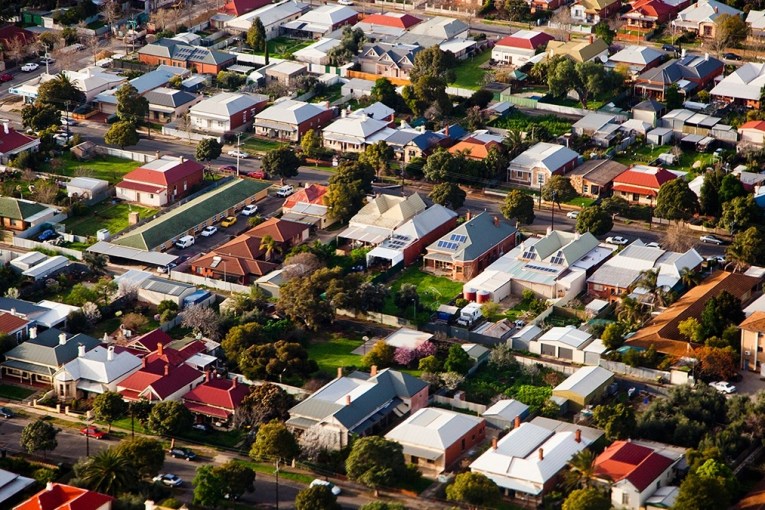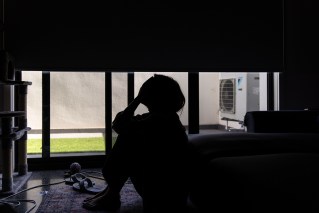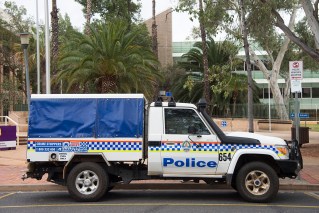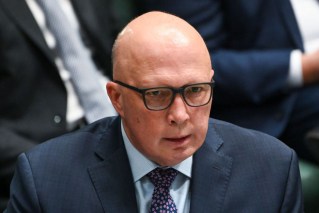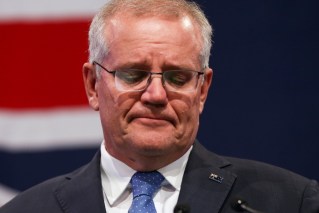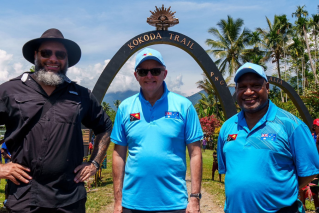Nuclear B-52s only the start of sustained US presence on Australian soil

China has warned that Australia could trigger an “arms race” in the region if the US pursues plans to station nuclear bombers in Darwin.
China’s Foreign Ministry spokesperson Zhao Lijian said such a move by Australia and the US would escalate regional tensions and gravely undermine peace.
“China urges parties concerned to abandon the outdated Cold War zero-sum mentality and narrow geopolitical mindset, and do more things that are good for regional peace and stability and mutual trust among all parties,” said Mr Zhao at his regular briefing in response to a question.
The ABC reported on Monday that the US is planning to build dedicated facilities for up to six B-52 bombers at RAAF Base Tindal in Katherine.
Ashley Townshend, from the Carnegie Endowment for International Peace, said that comes after successive Australian governments sought deepened military co-operation with America, and developments that position the NT as one of the few places in the world to support its bomber task forces.
Mr Townshend said nuclear-capable B-52s were only the beginning of US Air Force strategic bomber models likely to be hosted in the Northern Territory as Australia encourages a sustained American military presence in the region.
“Australia has, for a long time now, but certainly since 2011, been very concerned about the US’s eroding regional military footprint,” he said.
Mr Townshend said that Australia has been building infrastructure that provides America with access to a strategically advantageous geographical position that will keep it engaged in Asia.
“It’s about ensuring that the United States’ position in Asia won’t crumble,” he said. “This is about balancing Chinese power.”
Defence experts agree a permanent security presence shows Australia binding itself more tightly to a collective security agreement with America than previous deployments by marines or regular military visits.
Substantial infrastructure
The US Defence Department will reportedly foot the $22 million bill for the construction of an operations facility at the RAAF base.
Combined with 11 giant jet fuel storage tanks in Darwin, Mr Townshend said Australia will have substantial infrastructure that will play a role for America’s air force like few other places in the world.
“If you look at what’s happening in different parts of northern Australia, you can see where the full package is,” he said.
“We will be operating tankers out of Australia to refuel these aircraft [and] we’re already integrated insofar as our fighters can provide escort to these bombers.”
These developments, Mr Townshend said, suggests a future American presence for aircraft with capabilities far greater than the B-52 – a plane debuted in the 1960s and first deployed to Australia under Malcolm Fraser’s prime ministership.
“The military infrastructure that we’re seeing here will position Australia to undertake bomber task force missions … with many of the wherewithal that they would have back in the United States,” he said.
The move demonstrated that Australia will also be undertaking operations with other kinds of strategic bombers, he said.
“This story is significant, not for the aircraft or the fact that the basic B-52s are what they are, but it’s significant for the enabling infrastructure and what that could support now and into the future.”
Stealth bombers
Australia has already hosted a more advanced model – the B-2 American heavy strategic stealth technology.
“The B-2 bomber is a penetrating bomber in theory. You can fly over the Chinese mainland undetected and undertake deep strike missions.
“My hunch is, this B-52 is the biggest aircraft in the United States fleet – it has the widest wings; it’s probably the heaviest aircraft.
“So if you have an airstrip that can accommodate a B-52, it can accommodate anything smaller than a B-52, which will include everything else, including things under development.”

Peter Dutton flagged future deployments while defence minister last year. Photo: AAP
Four American B-2 bombers, out of a total US Airforce fleet of 20, were hosted for exercises over five weeks in Queensland earlier this year.
Following talks in Washington last year then defence minister Peter Dutton flagged “future deployments of all types of military aircraft to Australia”.
Deepening alliance
Professor Clive Williams from the ANU Strategic and Defence Studies Centre said the reported deployment reflected a deepening of Australia’s security alliance with America, and its associated costs and benefits.
“It does obviously bind us in more closely to the United States,” he said.
“And if the US got involved in, say, a conflict over Taiwan, or the South China Sea or some other issue, of course, it means that we’re more likely to become involved.
“That’s a danger, that over the years we’ve been committed so many times around the world to conflicts that weren’t any direct threat to Australia.
“Australia’s thinking has always been that if America is involved, and we get involved to assist them, that means that if there’s ever a threat directly to Australia, that America would come to our assistance.”
